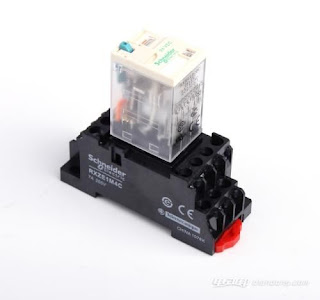A Basic Introduction to Relay
The relay is an automatic switching element with isolation function. It is widely used in remote control, telemetry, communication, automatic control, mechatronics and power electronics. It is one of the most important control components.
Relays generally have sensing mechanisms (input parts) that reflect certain input variables (such as current, voltage, power, impedance, frequency, temperature, pressure, speed, light, etc.) and the actuator (output portion) controls "off" and "on". Between the input portion and the output portion of the relay, there is also an intermediate mechanism (drive portion) that couples the input amount, functions, and drives the output portion.
As a control element, in summary, the relay has the following effects:
1) Expand the scope of control. For example, when the multi-contact relay control signal reaches a certain value, the multi-circuit circuit can be switched, disconnected, and turned on at the same time according to different forms of the contact group.
2) Zoom in. For example, sensitive relays, intermediate relays, etc., can control very high power circuits with a very small amount of control.
3) Integrated signal. For example, when a plurality of control signals are input to a multi-winding relay in a prescribed form, the comparison is integrated to achieve a predetermined control effect.
4) Automatic, remote control, monitoring. For example, a relay on an automated device, together with other appliances, can form a program control circuit for automated operation.
Classification of Relay
1 DC electromagnetic relay: An electromagnetic relay that controls the current to be DC. According to the contact load size, it is divided into four types: micro power, weak power, medium power and high power.
2 AC electromagnetic relay: The electromagnetic relay that controls the current to be AC. According to the coil power supply frequency, the frequency is divided into 50Hz and 400Hz.
3 Magnetic holding relay: Using a permanent magnet or a part with high remanence characteristics, the armature of the electromagnetic relay can maintain the relay at the position where the coil is energized after the coil is de-energized.
4 Solid State Relays: Solid state relays are all solid state devices that perform the functions of opening and closing circuits like electromagnetic relays, and whose input and output are insulated to the same level as electromagnetic relays.
5 Hybrid relay: A relay that combines electronic components and electromagnetic relays. Generally, the input part is composed of an electronic circuit, which functions as amplification and rectification, and the output part uses an electromagnetic relay.
6 High frequency relay: A relay used to switch AC lines with a frequency greater than 10 kHz.
7 Coaxial relay: A coaxial cable is used to switch between high frequency and RF lines with minimal loss.
8 Vacuum Relay: The contact part is sealed in a high vacuum container for quickly opening, closing or switching relays for high voltage, high frequency, RF lines.
9 Temperature relay: A relay that operates when the outside temperature reaches the specified requirements.
10 Electrothermal relay: A relay that is converted into thermal energy by the electric energy in the control circuit and operates when the specified requirements are met.
11 Photoelectric relay: A relay that operates with the photoelectric effect.
12 Polarized relay: A relay that acts by a combination of a polarized magnetic field and a control current through a control coil. The direction of action of the relay depends on the direction of the current in the control coil.
13 Time relay: When the input signal is added or removed, the output part needs to delay or limit the time to close or open the relay of its controlled line until the specified time.
14 Reed Relay: A relay that opens, closes, or switches a line by a seal that is sealed in a tube and has a dual action of a contact spring and an armature magnetic circuit.
Learn more about electronic knowledges, visit: IC Chip Word

Comments
Post a Comment